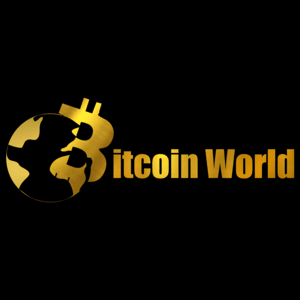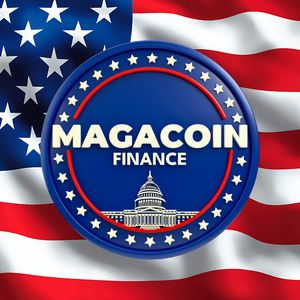Urgent Call: Korean Won Stablecoin Proposed to Safeguard South Korea’s Economy
6 min read
A significant development is stirring in the South Korean political landscape, directly impacting the future of its digital economy. Lee Jae-myung, a prominent figure and the presidential candidate from the Democratic Party of Korea (DPK), has put forward a compelling proposal: the swift adoption of a market based on the Korean won stablecoin . This isn’t just a technical suggestion; it’s a strategic move aimed at positioning South Korea at the forefront of global financial trends and, crucially, to prevent capital outflows . Speaking during a live talk show on May 8 with influential economy-focused YouTubers, Lee underscored the urgency and importance of this initiative. His remarks, reported by Money Today, highlight a growing recognition within mainstream politics of the transformative potential of digital assets, particularly stablecoins, for national economic stability and growth. Why the Focus on a Korean Won Stablecoin? The core idea behind a Korean won stablecoin is to create a digital currency pegged directly to the value of the South Korean won. Unlike volatile cryptocurrencies like Bitcoin or Ethereum, stablecoins aim to maintain a stable price, making them suitable for transactions, savings, and serving as a bridge between traditional finance and the crypto world. Lee Jae-myung’s advocacy for a won-pegged version specifically addresses South Korea’s unique economic needs and aspirations in the digital age. Currently, much of the stablecoin activity globally is dominated by US dollar-pegged stablecoins like USDT or USDC. While useful for international trade and accessing global crypto markets, relying heavily on foreign-denominated stablecoins can introduce currency risk and potentially facilitate capital moving out of the local economy into foreign digital assets. A won-based stablecoin could offer a robust, domestically controlled alternative. How Could a Korean Won Stablecoin Prevent Capital Outflows? One of the primary motivations cited by Lee Jae-myung stablecoin proposal is the potential to prevent capital outflows . But how exactly could a digital asset achieve this? Providing a Domestic Alternative: By offering a liquid and trusted stable digital asset denominated in won, South Koreans might be less inclined to convert their won into foreign currencies (like USD) or foreign-pegged stablecoins solely to participate in the digital asset space or seek perceived stability outside the local currency. Boosting Domestic Crypto Markets: A widely adopted Korean won stablecoin could significantly enhance liquidity and trading efficiency on South Korean cryptocurrency exchanges, making the domestic market more attractive for both local and international investors. Increased activity within the won ecosystem keeps capital circulating domestically. Facilitating Local Digital Commerce: If won stablecoins become integrated into everyday transactions and digital commerce platforms within South Korea, it further solidifies the won’s role in the digital economy, reducing the need for conversion to foreign currencies for online activities. Attracting Foreign Investment in Won Assets: A well-regulated, accessible won stablecoin could potentially attract foreign investors looking for exposure to the South Korean economy or assets in a digital format, leading to capital *inflows* rather than outflows. Lee’s vision aligns with a broader global trend where nations are exploring digital currencies, either through central bank digital currencies (CBDCs) or by fostering environments for private stablecoins, to maintain monetary sovereignty and control in an increasingly digital world. What Does This Mean for South Korea Crypto Policy? The proposal from a major presidential candidate signals a potential shift or acceleration in South Korea crypto policy . While South Korea has a vibrant crypto trading market, its regulatory stance has often been cautious, particularly regarding new forms of digital assets and their integration into the traditional financial system. Lee’s call suggests a willingness to embrace stablecoins more proactively. However, implementing such a policy would require careful consideration and likely involve significant collaboration between regulators, financial institutions, and technology providers. Key policy areas that would need attention include: Regulatory Framework: Establishing clear rules for the issuance, reserve requirements, and oversight of Korean won stablecoin issuers. This is crucial for ensuring stability and protecting users. Robust stablecoin regulation is paramount. Integration with Traditional Finance: Defining how won stablecoins would interact with existing banks, payment systems, and financial infrastructure. Consumer Protection and AML/KYC: Implementing strong measures to prevent illicit activities and safeguard users’ funds. Technological Standards: Ensuring interoperability and security for stablecoin platforms. The proposal opens up a national conversation about how South Korea can best leverage blockchain technology and digital assets to strengthen its economy and financial system in the face of global digital transformation. Exploring the Benefits Beyond Preventing Outflows While preventing capital flight is a major driver, the potential benefits of a well-implemented Korean won stablecoin ecosystem extend further: Enhanced Payment Efficiency: Stablecoins can facilitate faster, cheaper, and 24/7 payments compared to traditional banking systems, both domestically and potentially for cross-border transactions. Financial Innovation: A stable digital base layer can spur innovation in decentralized finance (DeFi), smart contracts, and other blockchain-based applications within the won ecosystem. Increased Financial Inclusion: Stablecoins could potentially offer access to digital financial services for individuals or businesses underserved by traditional banking. Global Competitiveness: By actively participating in the stablecoin market, South Korea can maintain its position as a technologically advanced nation and a leader in the digital economy. Keeping pace with global trends, as mentioned by Lee, is vital. These benefits collectively contribute to a more robust and dynamic digital economy, which in turn can help retain and attract capital. What are the Challenges and Considerations? Despite the potential upsides, the path to widespread adoption of a Korean won stablecoin is not without obstacles. Addressing these challenges will be critical for successful implementation. Challenge Area Description Regulatory Uncertainty Developing comprehensive and effective stablecoin regulation that fosters innovation while ensuring stability and preventing misuse. Reserve Management Ensuring that stablecoin issuers hold sufficient, high-quality reserves (like actual won deposits or short-term government bonds) to back the stablecoins 1:1, maintaining the peg. Adoption & Trust Gaining widespread public and business trust and encouraging adoption over existing payment methods. Technological Risks Ensuring the security and resilience of the underlying blockchain or distributed ledger technology. Impact on Monetary Policy Understanding how a large-scale stablecoin market might interact with or impact the central bank’s monetary policy tools. These challenges require careful planning, collaboration between the public and private sectors, and a phased approach to implementation. The specifics of stablecoin regulation will likely be the most significant factor determining the success and safety of a won stablecoin market. Lee Jae-myung’s Stance in Context Lee Jae-myung’s comments place him among a growing number of global policymakers acknowledging the increasing importance of digital assets. His focus on a won-based stablecoin specifically highlights a nationalistic economic perspective – using digital innovation to strengthen the domestic currency and financial system. While the proposal was made during a live talk show and may require formal policy articulation, it signals the Democratic Party’s potential direction regarding digital currency and South Korea crypto policy if they hold influence. The discussion around Lee Jae-myung stablecoin proposal is likely to evolve, prompting further debate on the role of private versus public digital currencies (like a potential CBDC from the Bank of Korea) and the overall strategy for integrating digital assets into the national economy in a way that maximizes benefits while mitigating risks, including the risk to prevent capital outflows . Concluding Thoughts: A Digital Future for the Won? The call for a Korean won stablecoin market by a prominent political figure like Lee Jae-myung is a pivotal moment for South Korea crypto policy . It moves the conversation beyond just regulating speculative trading to actively exploring how digital assets can serve strategic national economic goals, such as enhancing financial efficiency and, critically, helping to prevent capital outflows by providing robust domestic digital alternatives. While significant challenges related to stablecoin regulation , implementation, and adoption lie ahead, the potential benefits – from boosting financial innovation to strengthening the won’s position in the digital economy – make this a proposal worth serious consideration. The coming months and years will reveal how South Korea navigates these complex issues and whether a won-based stablecoin becomes a reality, shaping the nation’s economic future in the digital age. To learn more about the latest stablecoin trends, explore our article on key developments shaping stablecoin regulation and adoption globally.

Source: Bitcoin World



